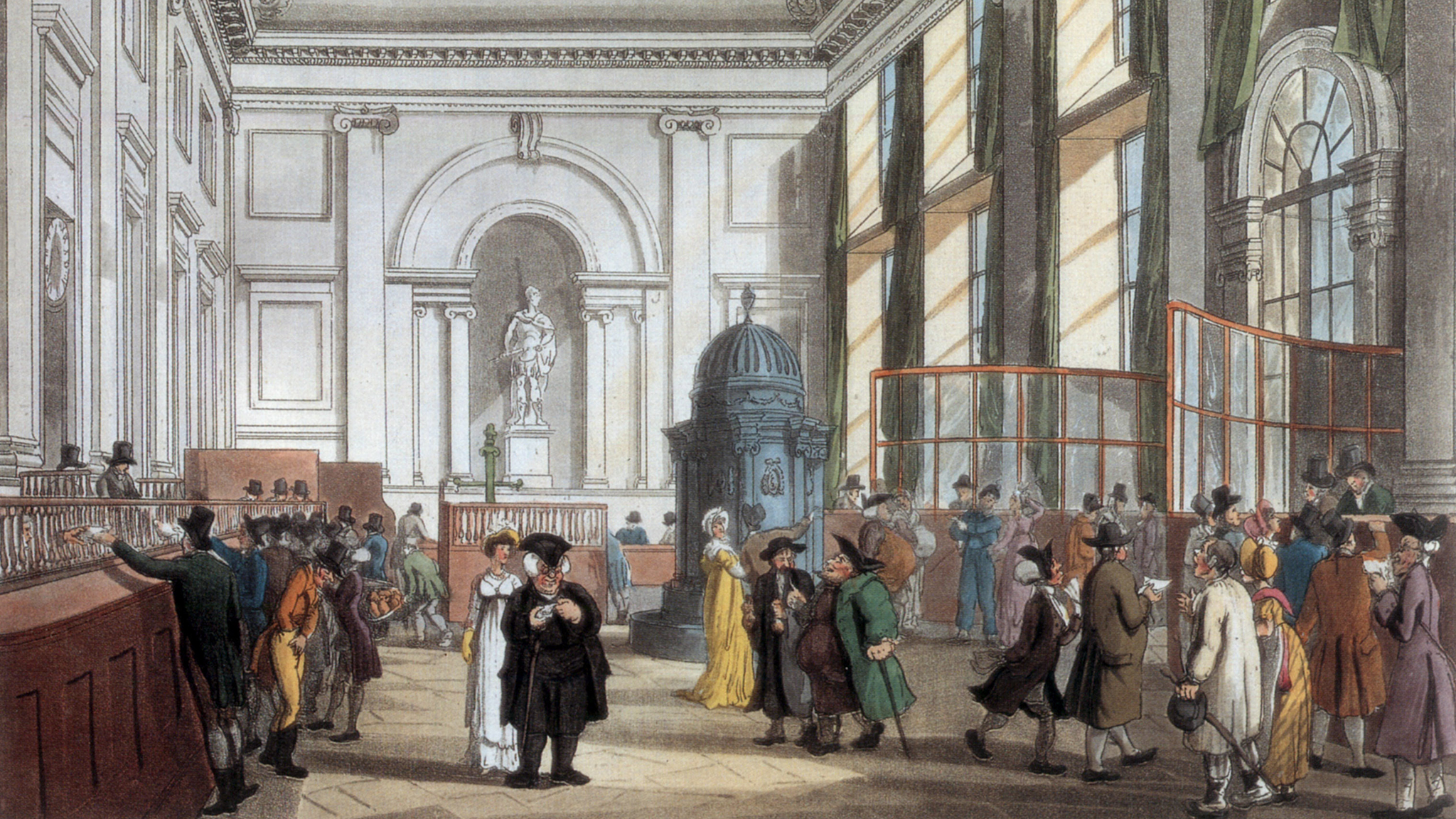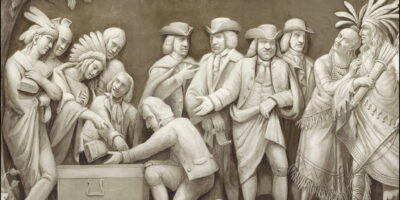Egregious Errors in The New Yorker’s Account of Financial History
Using history to shed light on present issues is trendy and tempting. But poor grasp of said history instead makes one’s reasoning embarrassing and inadequate.
In the upcoming issue of the New Yorker, John Lanchester writes a long-form essay misleadingly titled “The Invention of Money,” where he attempts precisely this: to weigh in on current questions about money and cryptocurrencies by looking at the financial and monetary past. Let’s just politely say that he underperforms.
Lanchester is initially concerned with questions about what money is and how money “derives its value” — especially in regard to established cryptocurrencies such as Bitcoin and new initiatives such as Facebook’s Libra. He bundles that interest with a very confusing — and mostly misleading — account of the early history of the Bank of England. And it does very little to shed light on questions of money.

The middle third of his essay is a long-winded and rough account of the Bank of England’s early history and a somewhat unrelated account of John Law’s financial schemes in France. Finally, Lanchester concludes the essay by discussing the English 19th-century banker Walter Bagehot and the perennial problem of how to deal with failing banks. The essay leaves the reader puzzled as to his overall point: The origin of money? Banking instability? Government creation of banks or even currency?
Allow me to clear up some of the worst mistakes in this highly questionable use of financial history.
It is not primarily errors in the historical timeline that bothers me — such as lumping together all major early financial crises (1797, 1825, 1847, and 1857, forgetting 1837 and 1866) and referring to all of them as caused by “Victorian banks” even though Victoria’s reign ran only from 1837 to 1901. More disturbing is the misplaced emphasis and the erroneous conclusions for banks and money in general. Clearly, the 18th- and 19th-century English and American banking systems were dysfunctional and remarkably fragile. To brush them all into a single-cause explanation like Lanchester does (“lending money to people who can’t pay it back”) ignores the nuances and the very different settings between, say, liquidity crunches (1866) and agriculturally fueled crisis (1847 or 1857) and monetary troubles of resuming specie convertibility (1825).
Those blunders are still not Lanchester’s most grievous errors. In his description of the Bank of England’s founding in 1694, he stresses the revenue-raising rationale for the English government. In war with France, a new company was created in exchange for a £1.2 million loan at 8 percent (actually 8.33 percent when accounting for the £4,000 “management fee”), and additionally the bank could take in deposits and issue banknotes that “rapidly became a generally accepted new currency.”
Strangely enough, Lanchester forgets to mention the explicit monopoly on note issuing that the Bank received in exchange for its advancing funds and how the limited liability and roughly 1,300 initial shareholders gave the Bank an extreme regulatory advantage over other banks that were limited to a maximum of six partners, all unlimitedly liable for their banks’ debts. Moreover, the Bank’s note monopoly crowded out an already-existing, thriving, and well-functioning private market for banknotes.
More importantly, while the amount itself was large (almost 2 percent of English GDP and over a fifth of government expenditures for 1693–94), the Bank was only one part of the English government’s increasingly desperate attempts to raise funds — and by no means the largest one. Parliament and the Crown issued debt, ran lotteries, issued tontines (early life insurance schemes), and kept using the tally system (essentially short-term trade credit). Not even the monopoly privilege to the Bank was unique, as two other companies (the East India Company and the South Sea Company) supplied the government with even more funds in exchange for privileges and monopolies in their respective business.
For the first 50 years of its existence, the Bank’s financing of government debt was much smaller than that provided by the other “monied companies.” In a remarkable article, financial historians Lawrence Broz and Richard Grossman point out that rather than a unique event, the Bank’s privileges were altogether common: “just another privileged entity that loaned the government money in return for favors.” The Bank’s early history is one of repeat payments for various privileges — not a benign introduction of currency for a cash-strapped economy as Lanchester seems to believe.
For a child of a banker, Lanchester manages to get a lot of banking backwards. While the Bank did allow the public to deposit funds with it, those deposits were not tied or connected to notes; notes were circulating non-interest-bearing instruments rather than receipts for previously deposited funds. In outlining a risk faced by fractionally reserved banks, Lanchester writes:
A system in which banks don’t hold cash reserves equivalent to their outstanding loans works fine, unless enough people turn up at the bank and simultaneously want their paper money turned into its metal equivalent.
Intending to describe the risk all banks face when their outstanding assets (business loans or mortgages) have a longer maturity than does their funding (deposits, notes outstanding), Lanchester misplaces “loans” — and should have written “deposits” or some other kind of liability. A bank does not need to hold cash (asset) against outstanding loans (assets), but against liabilities — that is, sufficiently large cash reserves that can insure against becoming illiquid.
In Lanchester’s discussion of the early history of the Bank, it’s also not clear what he believes is its unique innovation; Venice’s Rialto Bank was formed around consolidated government war bonds centuries before; the immediate predecessor to the Swedish Riksbank (Stockholms Banco) is generally credited with having issued notes unconnected to deposits half a century before 1694; the privately issued notes by goldsmith bankers had long circulated in London well before the birth of the Old Lady; Amsterdam’s Wisselbank had by this time experimented with centralized paper money in an almost cryptocurrency-like ledger system, with deposits fully backed by reserves as well as decoupled redeemability receipts, turning the exchange bank into a fractional reserve bank.
The sections on John Law and Walter Bagehot are definitely substandard. Almost nothing about the English government’s revenue-raising in the 1690s or France’s Law-inspired schemes in the 1710s can be said to be “still with us”: fiat paper money is not redeemable in gold; seigniorage profits from the Bank of England and other central banks are remitted to their respective Treasuries — for social spending rather than wartime spending. While the Bank’s note monopoly is still with us, banknotes constitute an increasingly irrelevant share of economies and bank financing.
In contrast to Lanchester’s presumption that Law’s innovation was one of fractionally reserved banks, that company form was hardly a novelty in the 1710s, but how banks have been structured since their infancy. Similarly, Lanchester’s belief that we inherited other banking inventions from Law is equally mistaken; a central bank that issues money and “manipulates the supply of credit” and fractional reserve banks and joint stock companies that pay dividends are far from unique to — or original in — 18th-century France. In no way did John Law “prefigure” fractional reserve banking.
As for Walter Bagehot, Lanchester’s discussion is, if anything, even less informative, and he seems to have read James Grant’s new biography of Bagehot only haphazardly. Allegedly, Bagehot thought that only gold was money, whereas monetary economists usually distinguish outside money — irredeemable base money such as gold in Bagehot’s time or U.S. dollars and British pounds today — from inside money, which is money instruments created by banks (bank deposits or circulating private banknotes in the 19th century).
Not even in theory, as Lanchester claims, was inside money backed by gold since banks were fractional reserve banks. What probably confused Lanchester was that after the 1844 Bank Act, newly issued notes by the Bank of England were supposed to vary 1-for-1 with the amount of gold in the Bank’s coffers. In reality, the reserve at the Banking Department acted as a buffer to the outstanding money and thereby sterilized the intended mechanism.
Moreover, it was emphatically not Bagehot’s opinion that the Bank of England ought to hold all the nation’s gold and bail out smaller banks when they ran into trouble, but a lamentable outcome of the mid-century system that Bagehot found himself powerless to change. He would much rather have seen a Scottish-style free banking system. The practice of bailing out troubled banks was also firmly established only after the Barings crisis in 1890; famously, in 1866 the Bank intentionally let Overend & Gurney fail, in what seemed like vengeful hostility toward its main competitor. Indeed, after every crisis in the second half of the 19th century, we see commercial banks increasing their liquid positions (reserves and short-term assets) to permanently higher levels — indicating that they did not trust the Bank to perform its alleged lender-of-last-resort role.
What we get from Lanchester is a very confused and mostly inaccurate account of important financial history. I’m glad the rise of cryptocurrencies seems to have brought about this interest in money and in financial and monetary history, but one could politely request a somewhat higher quality from the pages of The New Yorker.











